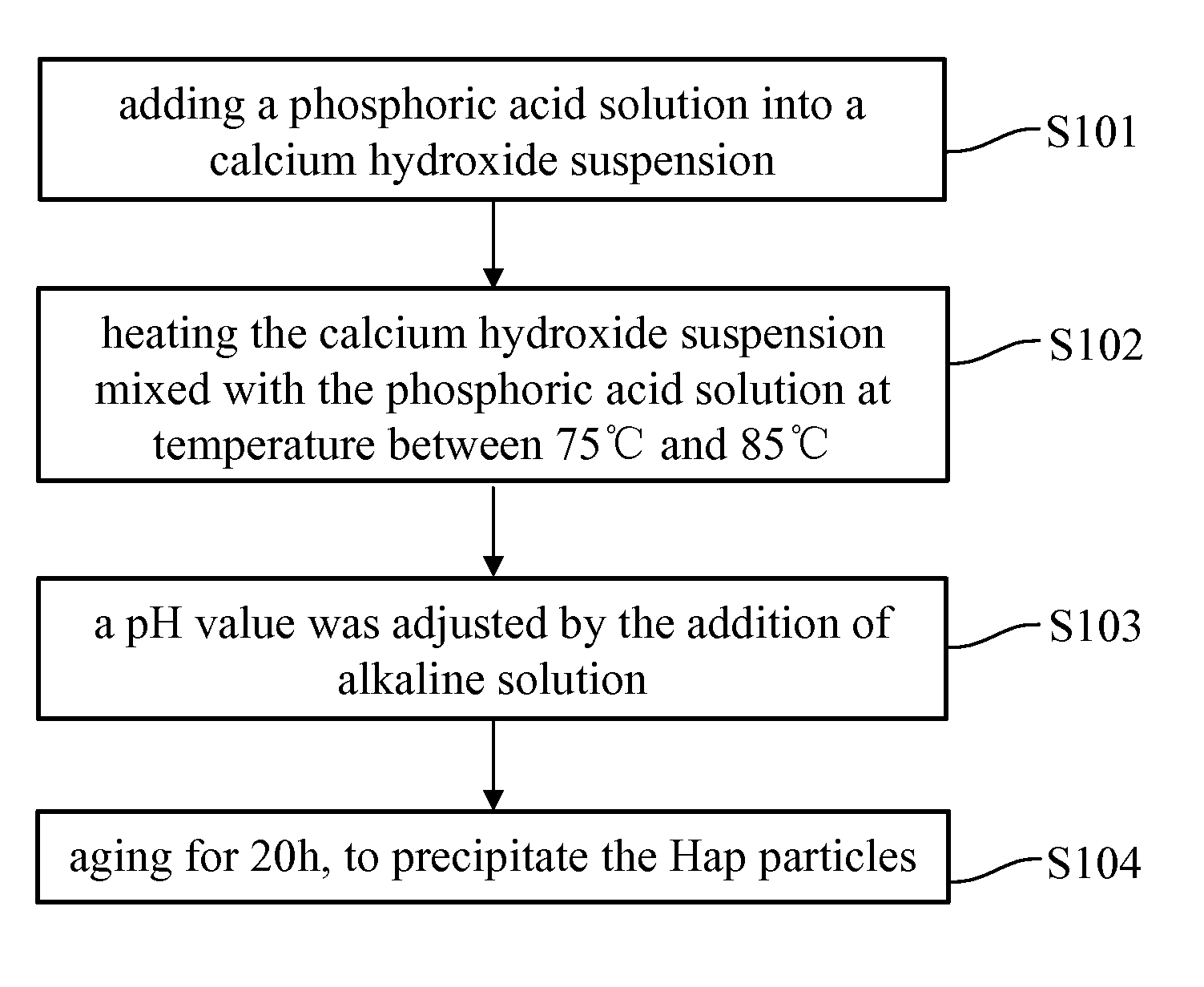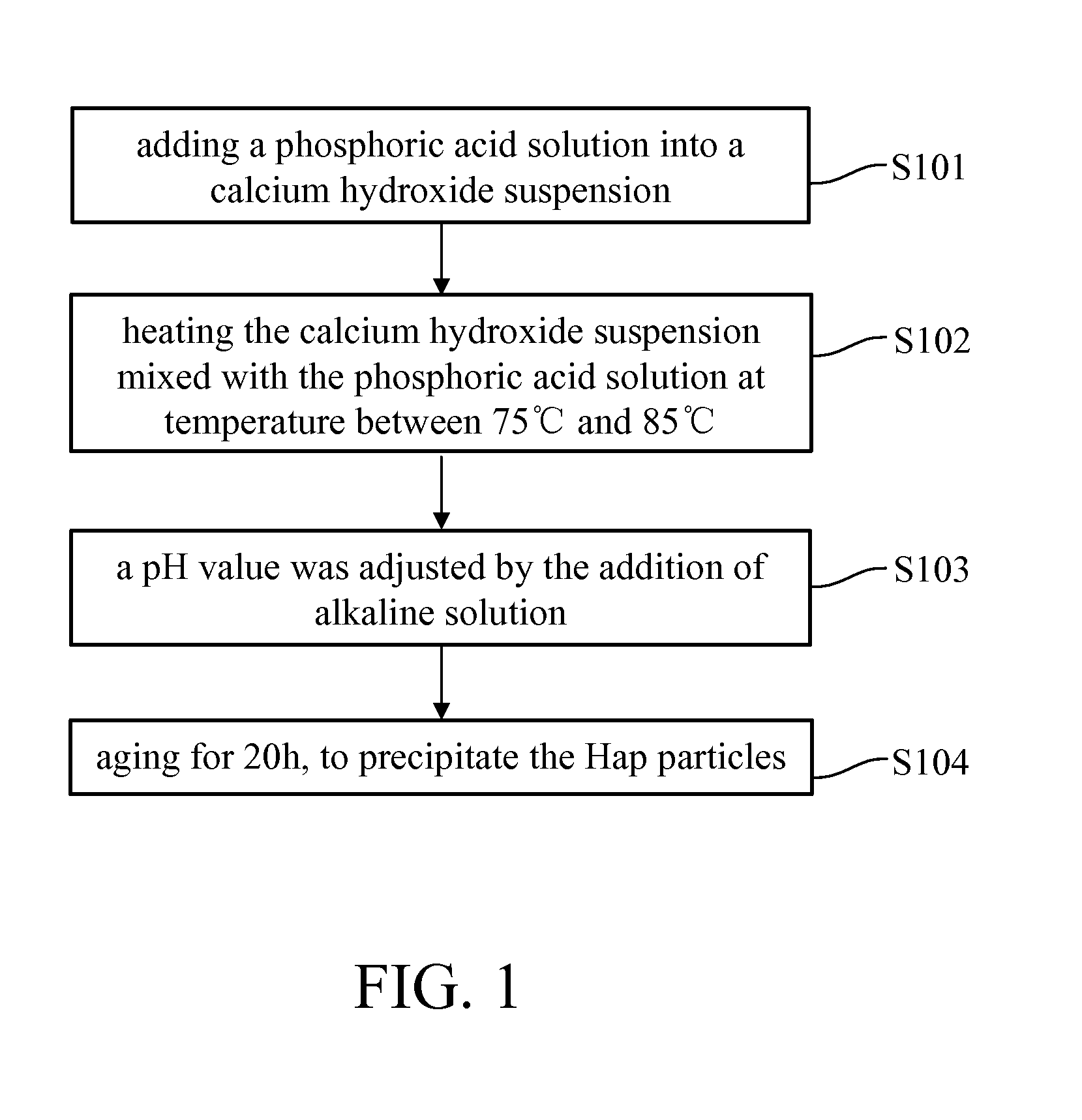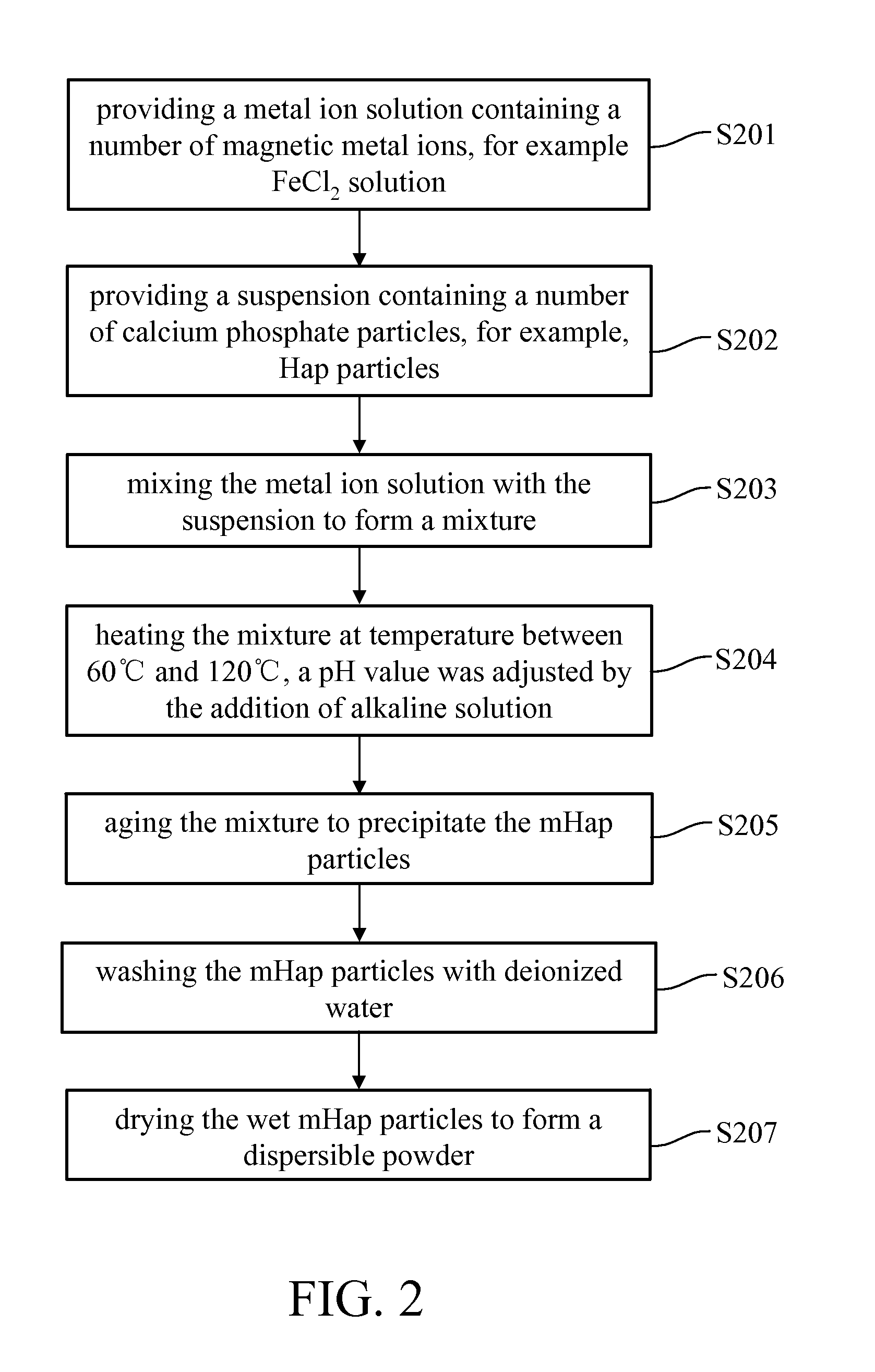Superparamagnetic nanoparticles IN MEDICAL THERAPEUTICS and manufacturing method THEREOF
a nanoparticle and superparamagnetic technology, applied in the field of nanoparticles, can solve the problems of high cost, restricted dna carrying capacity, risk of carcinogenity, etc., and achieve the effects of reducing the magnetic attraction effect, avoiding the presence of cytotoxicity, and being more effectiv
- Summary
- Abstract
- Description
- Claims
- Application Information
AI Technical Summary
Benefits of technology
Problems solved by technology
Method used
Image
Examples
Embodiment Construction
[0035]The present invention relates to a method for biomaterials. The notable findings of the invention were that the superparamagnetic NPs in medical therapeutics comprising synthetic calcium phosphate crystallites could be modified to be made superparamagnetic property. And, the superparamagnetic NPs in medical therapeutics displayed enhanced gene transfection or drug delivery when used as non-viral vectors under the action of a magnetic field.
[0036]In an embodiment of the present invention, the manufacturing process for preformed calcium phosphate particles, as shown in FIG. 1, were treated with a solution of magnetic metal ions (i.e. metal ions solution) at a rate of 0.5˜3 mL / min followed by alkaline condition at 60˜120° C., as shown in FIG. 2, to form a superparamagnetic NPs. An average particle size of the calcium phosphate particles and the superparamagnetic NPs respectively are between 1˜600 nm, for example, between 1˜100 nm. The calcium phosphate particles can be prepared b...
PUM
| Property | Measurement | Unit |
|---|---|---|
| particle size | aaaaa | aaaaa |
| particle size | aaaaa | aaaaa |
| particle size | aaaaa | aaaaa |
Abstract
Description
Claims
Application Information
 Login to View More
Login to View More - R&D
- Intellectual Property
- Life Sciences
- Materials
- Tech Scout
- Unparalleled Data Quality
- Higher Quality Content
- 60% Fewer Hallucinations
Browse by: Latest US Patents, China's latest patents, Technical Efficacy Thesaurus, Application Domain, Technology Topic, Popular Technical Reports.
© 2025 PatSnap. All rights reserved.Legal|Privacy policy|Modern Slavery Act Transparency Statement|Sitemap|About US| Contact US: help@patsnap.com



